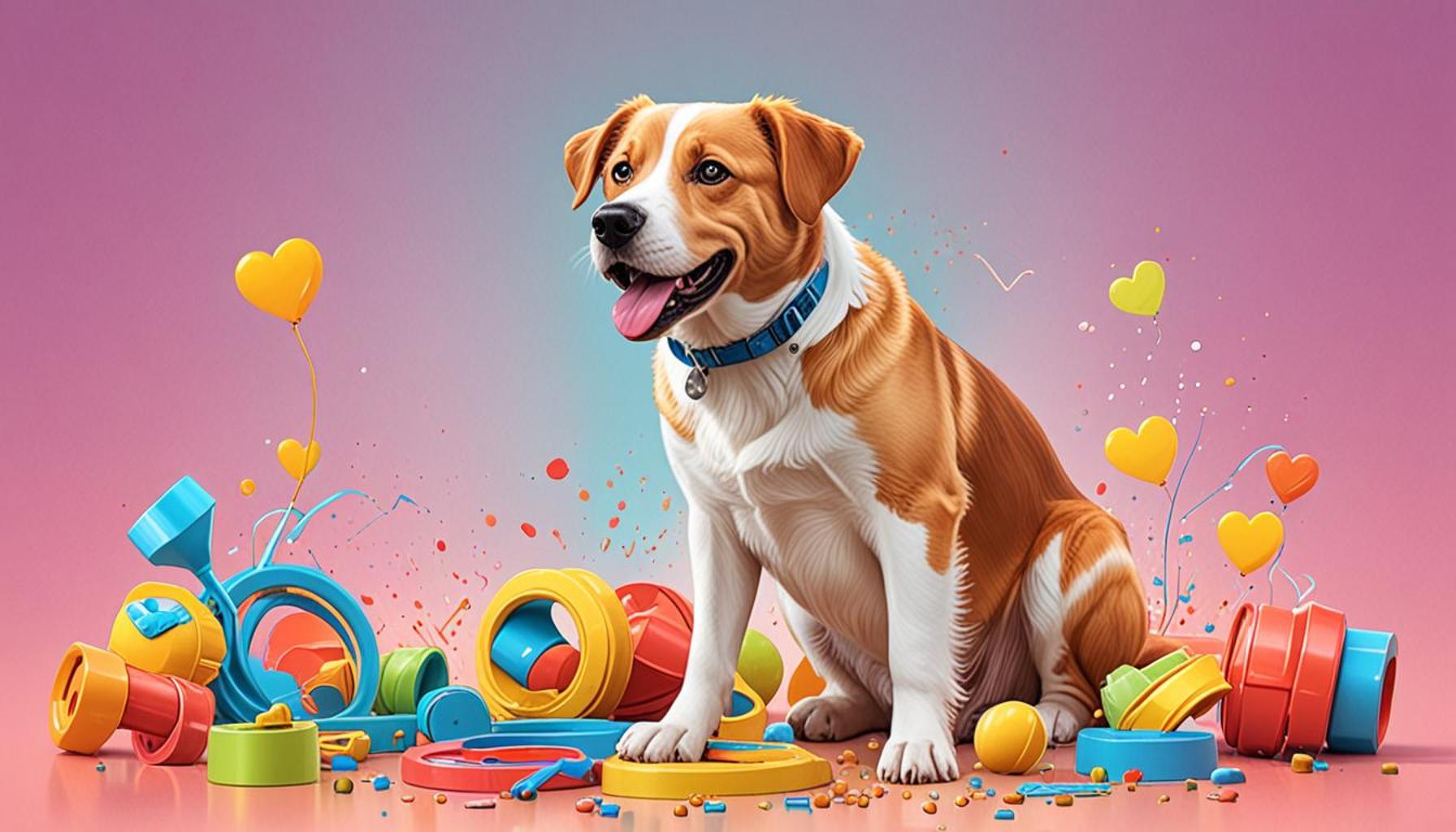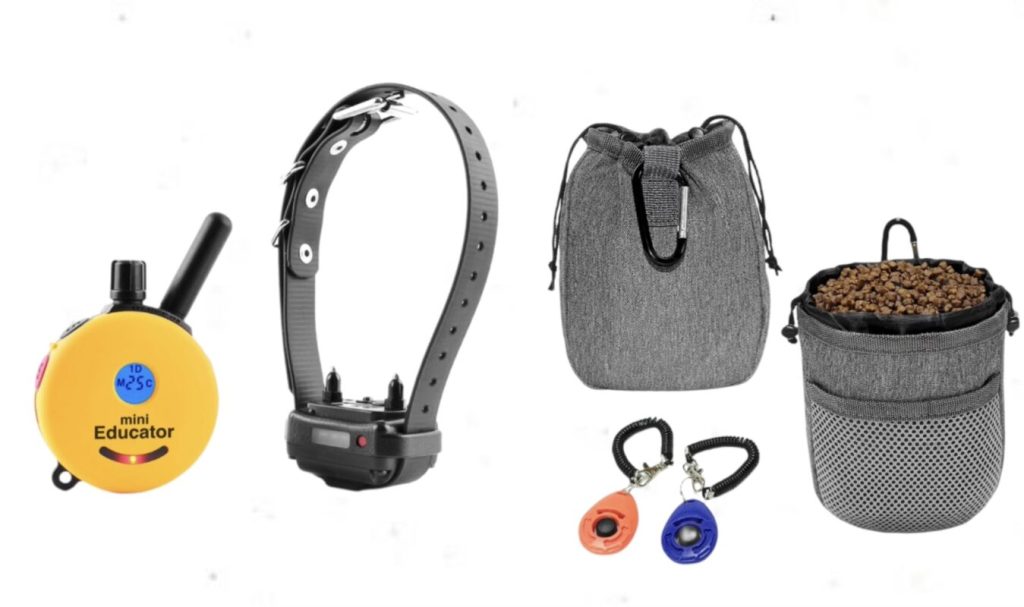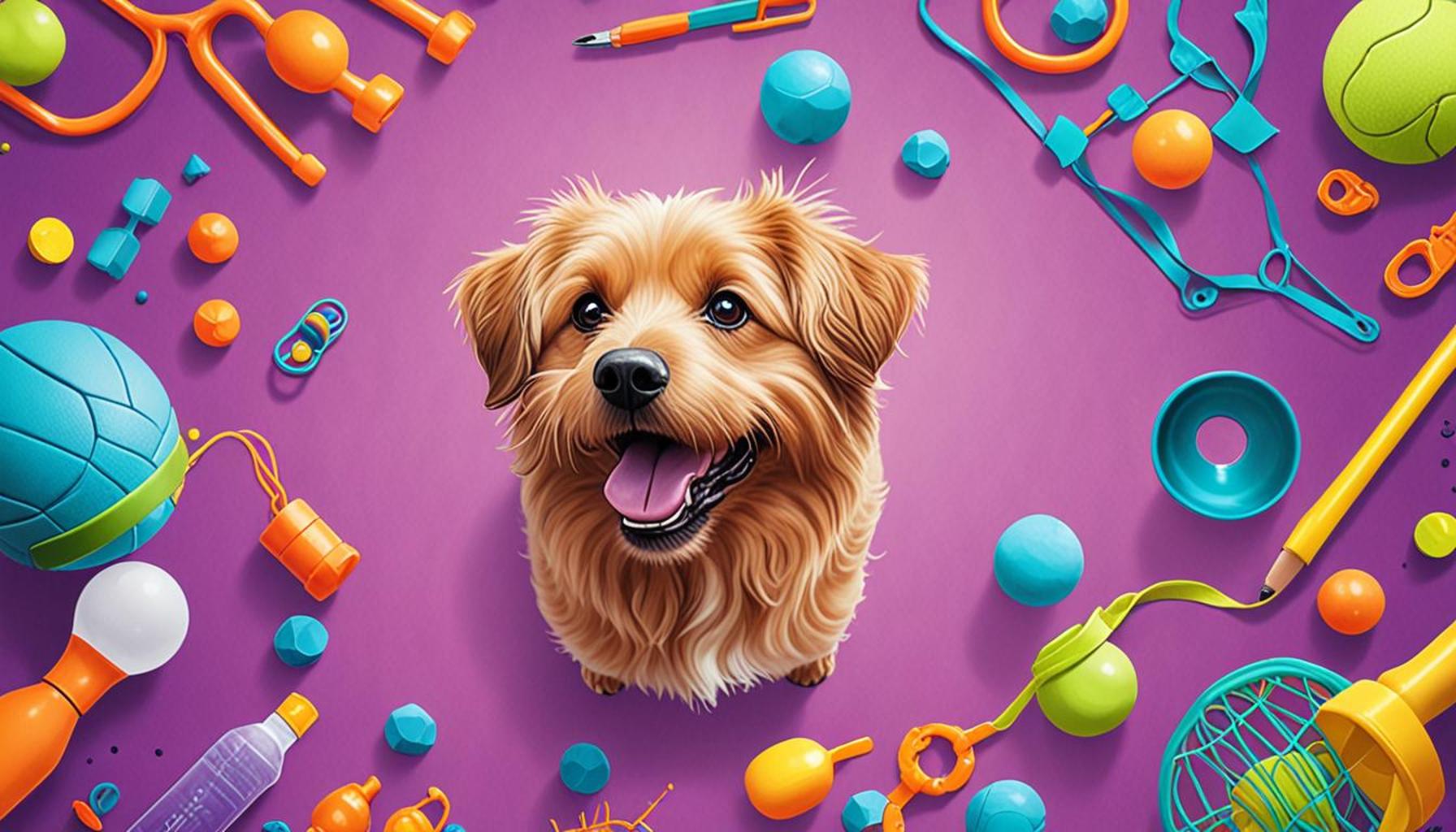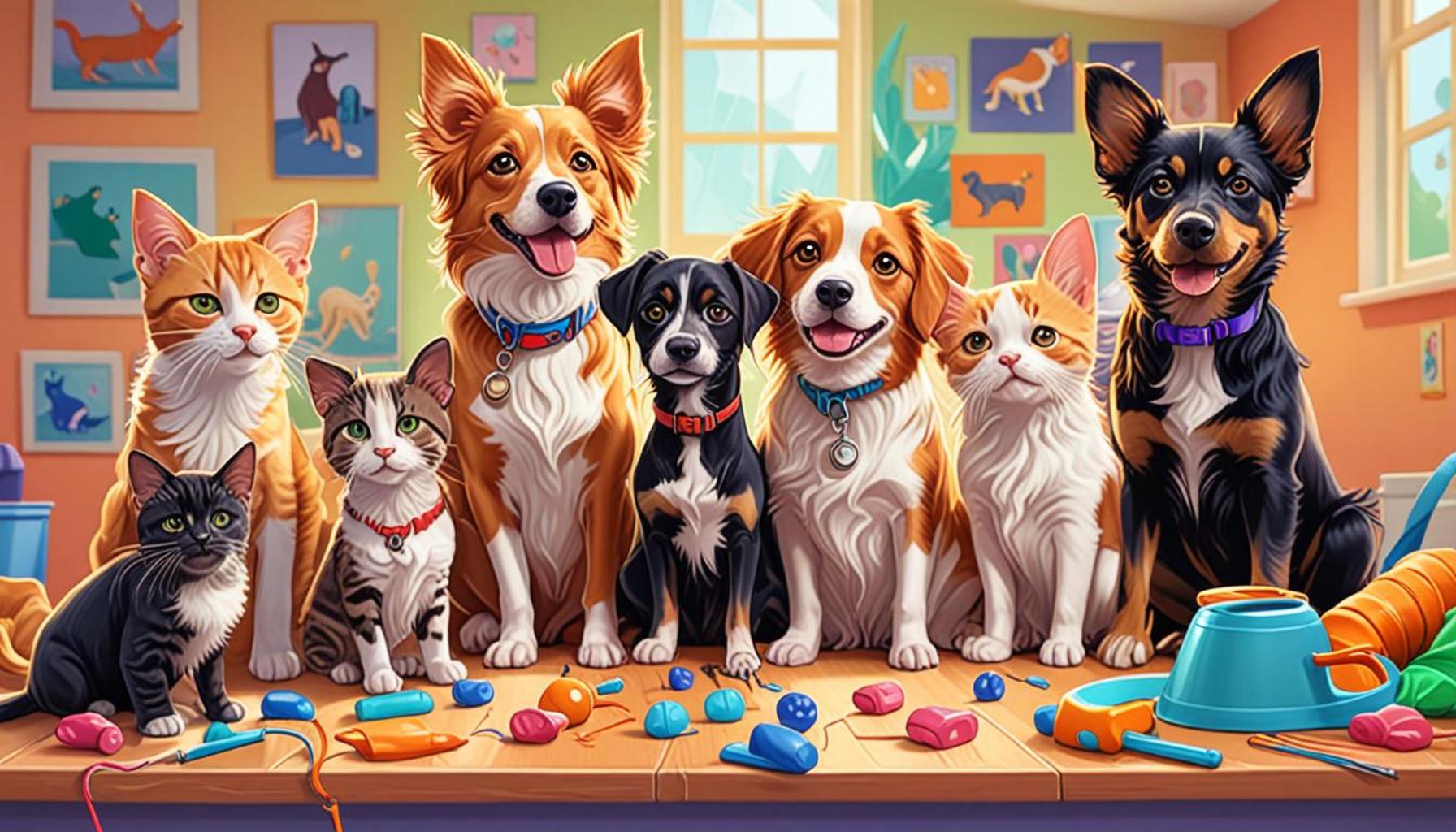Positive Reinforcement Techniques in Dog Training

Understanding the Impact of Training Methods on Your Dog
Training your dog can be one of the most rewarding experiences, not just for your pet but for you as well. With positive reinforcement techniques, you can build a bond based on trust, respect, and communication. This approach focuses on rewarding desired behaviors, making training enjoyable for both you and your canine companion. By emphasizing positivity, you redirect your dog’s focus toward desirable actions instead of undesired ones, creating a proactive rather than reactive training atmosphere.
Why choose positive reinforcement? Here are some compelling reasons:
- Encourages Good Behavior: Instead of punishing bad actions, positive reinforcement techniques help you guide your dog into displaying the behaviors you want to see. For instance, if your dog jumps on people, instead of scolding them, you could reward them when they remain calm and seated. This approach teaches them what is expected rather than reinforcing fears of consequences.
- Reduces Anxiety: Dogs trained with positive reinforcement often experience lower levels of stress and anxiety. Training sessions that incorporate rewards can make the process fun, transforming what could be a daunting task into an enjoyable game for your dog. For example, anxious dogs might become more confident as they learn and understand through positive interactions.
- Strengthens the Human-Animal Bond: Positive experiences lead to a stronger connection between you and your dog. Engaging in training using treats or play will create shared moments that can deepen your relationship. This bond is critical, especially in fostering trust, which is essential for your dog to feel secure in various situations.
Furthermore, utilizing techniques such as treats, praise, and playtime can make learning fun. Popular techniques include:
- Clicker Training: This method uses a small handheld clicker to mark the exact moment your dog performs the desired behavior. The sound signifies a reward is coming, making it a powerful tool for clarity in commands.
- Treat Rewards: Offering small, tasty treats when your dog exhibits good behavior is a direct and effective way to encourage compliance. For instance, giving a piece of kibble when your dog sits on command reinforces that their action was appropriate.
- Verbal Praise: A well-timed, enthusiastic “good boy!” or “well done!” can motivate your dog just as much as any physical reward. Your voice conveys emotion and connection, fueling their desire to please you.
- Interactive Games: Incorporating games like fetch or hide-and-seek into training can enhance your dog’s cognitive skills while providing physical exercise as well. These activities not only serve as rewards but can also teach commands in a playful context.
As you delve into the world of positive reinforcement techniques, you’ll discover how your dog’s behavior can transform into a more obedient and happy disposition. In the long run, creating a positive training environment benefits both you and your furry friend. This approach not only helps in compliance but can also contribute to a more stable and well-adjusted pet as they grow. Join us on this journey to unlock the full potential of your dog’s training experience!
DON’T MISS OUT: Click here to discover more about the link between playtime and your pet’s well-being!

Essential Techniques for Positive Reinforcement in Dog Training
Understanding the different positive reinforcement techniques can significantly enhance your dog training success. Employing a variety of methods not only keeps your training sessions engaging but also caters to the unique personality and learning style of your dog. Below, we delve into some fundamental techniques that are widely used and appreciated by dog trainers across the United States.
Clicker Training: Precision and Timing
One of the most effective positive reinforcement techniques is clicker training. This method involves using a small device that emits a distinct sound when pressed. The key to this technique lies in the timing; the clicker must be used precisely when your dog performs the desired behavior. For example, if you are teaching your dog to “sit,” clicking the moment their bottom touches the ground lets them know they have done something right. Following the click with a treat reinforces the action, making it more likely that your dog will repeat it in the future. Research indicates that clicker training can improve learning speed and clarity in commands, making it a go-to choice for many trainers.
Treat Rewards: Simple and Effective
Utilizing treat rewards is another straightforward yet powerful method. The concept is simple: whenever your dog exhibits the behavior you’ve been working on, reward them promptly with a small treat. This not only serves as a positive reinforcement but also generates anticipation in your dog for the reward. For instance, offering a small piece of chicken when your dog successfully performs a trick reinforces their learning and solidifies your bond. It’s vital, however, to choose treats that are healthy and suitable for your pet, as over-rewarding can lead to weight gain.
Verbal Praise: The Power of Encouragement
Verbal praise is an often underrated yet incredibly effective form of positive reinforcement. The enthusiastic tone of your voice can greatly impact your dog’s motivation to learn. When your dog completes a task successfully, an encouraging “good boy!” or “fantastic job!” can provide just as much reinforcement as a treat. This verbal acknowledgment not only motivates your dog but also strengthens the emotional connection you share. Consistency in your praise will further solidify your dog’s understanding of what behaviors are desired.
Interactive Games: Learning Through Play
Incorporating interactive games into your training regimen serves dual purposes: it reinforces commands while also providing vital mental and physical exercise for your dog. Activities such as fetch, tug-of-war, or hide-and-seek can teach your dog obedience and foster a spirit of companionship. While engaging in these games, you can introduce commands that can be linked to the activity, such as “drop it,” “come,” or “leave it.” This way, fun becomes intertwined with obedience training, creating a more enjoyable experience for both you and your dog.
By integrating these positive reinforcement techniques into your training, you can create a nurturing environment that encourages your dog to thrive. As you continue this journey, remember that patience and consistency are your best allies. With time and practice, you will witness remarkable changes in your dog’s behavior, making the training process a truly rewarding experience.
| Advantage | Description |
|---|---|
| Increased Engagement | Using positive reinforcement techniques keeps dogs motivated and eager to learn, creating a more dynamic training environment. |
| Building Trust | Consistently rewarding desired behaviors fosters a bond based on mutual respect and trust between the dog and trainer. |
| Long-Lasting Results | Training with positive reinforcement leads to behaviors that are more likely to stick, even in the absence of rewards. |
| Fun Learning | Turning training into a game with rewards makes the process enjoyable for both the dog and the owner, enhancing learning outcomes. |
The implementation of positive reinforcement techniques in dog training opens up numerous pathways for effective communication between dogs and their handlers. By emphasizing rewards over punishment, trainers can significantly impact their dogs’ behavior and responsiveness. This approach not only results in better manners but also promotes mental stimulation and a willingness to learn, which is vital for a dog’s overall well-being. As it creates a positive association with training, dogs are more likely to participate actively and engage in further learning opportunities, leading to a well-rounded and happy pet. For those looking to delve deeper, numerous resources and expert advice on these methods abound, offering rich content to explore.
DISCOVER MORE: Click here to learn about aging and your pet’s behavior
Expanding on Positive Reinforcement Techniques
While clicker training, treat rewards, verbal praise, and interactive games are foundational techniques in positive reinforcement training, exploring advanced methods can take your dog training to the next level. Each of these techniques can be customized to align with your dog’s unique behaviors and motivations, further enhancing the effectiveness of your training sessions.
Stationary Commands: The Foundation of Impulse Control
Teaching your dog stationary commands, such as “stay,” “wait,” or “place,” is crucial for building impulse control. Using positive reinforcement with these commands involves rewarding your dog for remaining in a designated spot, thereby instilling patience and discipline. For example, placing your dog in a “stay” position and rewarding them with a treat when they maintain that position can significantly improve their self-control, particularly during distractions. This technique is particularly beneficial in public settings, helping you navigate busy environments safely.
Gradual Desensitization: Tackling Fears with Kindness
Desensitization, when combined with positive reinforcement, can be an invaluable method for addressing fear-based behaviors. If your dog is frightened of loud noises or encounters with other animals, gradual exposure—coupled with rewards—can help. Start by introducing the fear-inducing stimulus at a manageable level, rewarding your dog for calm behavior. For instance, if your dog is afraid of thunderstorms, play a recording of thunder at a low volume while giving treats. Gradually increase the volume as your dog adjusts, reinforcing their brave demeanor. Over time, this technique can help erase phobias and replace fear with confidence.
Target Training: The Power of Precision
Target training involves teaching your dog to touch a specific object, such as your hand or a target stick, with their nose. This method is particularly effective for teaching complex behaviors and commands. By rewarding them for touching the target, you can create a foundation to build upon. For instance, you can train your dog to navigate around obstacles, perform tricks, or follow you in an organized manner. This technique not only serves as a fun exercise for your dog but also enhances their focus and willingness to learn.
Social Reinforcement: Encouraging Appropriate Interactions
Positive reinforcement can also extend to social interactions with other dogs and humans, promoting good behavior in a social context. Incorporating playdates or group training sessions can provide opportunities for your dog to engage positively with peers. When your dog interacts appropriately with others—without excessive barking or jumping—rewarding them reinforces the behavior. Social reinforcement nurtures good manners and helps your dog become a well-adjusted member of the canine community.
Consistency and Timing: Keys to Effective Reinforcement
Ultimately, the effectiveness of any positive reinforcement technique hinges on consistency and timing. Each time your dog successfully performs the desired behavior, your response should be immediate and consistent to solidify their learning experience. Utilizing a combination of techniques tailored to your dog’s learning style will not only enhance their training process but also deepen your bond. The journey of dog training is not just about commands; it’s about establishing communication and understanding between you and your canine partner.
DISCOVER MORE: Click here to find essential emotional tips for new pet owners
Conclusion: Embracing Positive Reinforcement in Dog Training
As we have explored throughout this article, positive reinforcement techniques in dog training are not just an effective means of teaching commands; they are vital for fostering a trusting and rewarding relationship between you and your canine companion. By utilizing methods such as stationary commands, gradual desensitization, target training, and social reinforcement, you equip your dog with essential skills while nurturing their confidence and enhancing their overall well-being.
Moreover, the significance of consistency and timing cannot be overstated. Establishing a predictable pattern in your responses to your dog’s behavior solidifies their learning experience, making it clearer for them to understand what is expected. This clarity of communication ultimately leads to a more engaged and eager learner.
As you embark on your training journey, remember that patience is key. Each dog is unique, with distinct preferences and learning styles, and adapting your techniques to meet these individual needs can yield fruitful results. Whether you’re facing behavioral challenges or simply looking to enhance your dog’s skills, positive reinforcement techniques provide a compassionate and effective avenue for training.
In essence, dog training is an evolving journey that combines fun, patience, and understanding. By fostering this bond through positive reinforcement, you not only teach your dog essential behaviors but also create a harmonious relationship built on trust and mutual respect. So, step into your training sessions excitedly, knowing that you are not just shaping a well-trained dog, but nurturing a lifelong companion.



